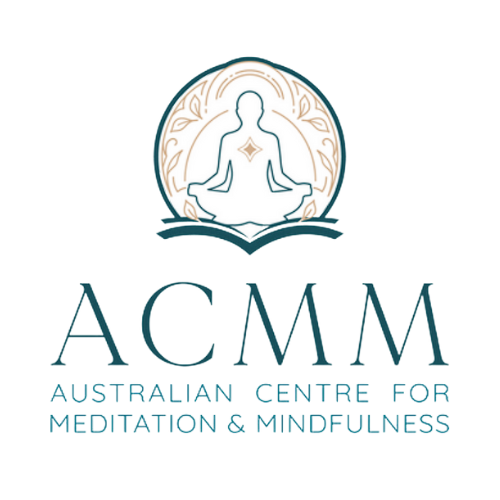In today’s busy and fast-paced world filled with constant distraction and stress, the practices of meditation and mindfulness have emerged as powerful tools for cultivating mental and emotional peace, balance, and clarity. While the definition of these terms is not clear-cut, this article aims to shed light on some of the key similarities and differences between them. So what’s the difference between mindfulness and meditation?
Complementary and Distinct
Although often used interchangeably, meditation and mindfulness are complementary, sometimes overlapping. They are also distinct practices that offer unique attributes and benefits for people seeking to enhance overall well-being or support personal growth and development. They do share common ground in exercising the mind and promoting inner calm. However, by understanding the nuances related to the difference between meditation and mindfulness, you can embark on a transformative journey towards greater awareness, equanimity, and spiritual growth in your life.
Meditation and Mindfulness: Key Similarities
- Both terms point to a natural and fundamental essence. An innate nature within us, which can be recognised and remembered through inner contemplation. These essential qualities lie before, beneath, and behind the usual self-reflexive, busy, or wandering, logical thinking mind. Qualities such as relaxed awakeness, the sense of knowing or awareness, compassion, curiosity, connectedness, and creativity are all intrinsic to our Being. By ‘Being’ I mean the fact that we are. We could say Being is our essential self, the sense of being here, now, aware. Before we think, feel, or do anything, we are. Without Being, we would not be able to think, feel, perceive, or do anything.
- They support letting go of thinking. Our modern lives are full of stressors and distractions that pull our attention away from our sense of Being. Thinking can predominate in the form of planning, learning, interpreting, ruminating, and so on. Thinking is very natural and necessary. However, it is an activity of our mind which can easily take us away from the inherent peace, presence and awarneness of our essential self.
- They help us regulate attention. We might more commonly find the terms ‘meditation and mindfulness’ being used to refer to techniques that help to bring us back to our innermost sense of self. To recognise and embody the innate qualities of Being within us, including those mentioned above. These techniques usually involve managing attention and developing self-awareness. The result of which is that we can also strengthen our ability to self-regulate.
So, in a way, meditation and mindfulness are not just what we do, but point to what we already inherently are. When we are in a ‘meditative’ or ‘mindful’ state we embody the innate qualities of our Being.
Key Differences between Meditation and Mindfulness
Whilst both meditation and mindfulness involve training the mind, they differ in focus and intention. Thus they lead to different effects and benefits. Of the numerous types of meditation practices, techniques may be either concentrative, or attentive. Concentrative techniques help develop the capacity for focused attention. Attentive techniques foster open monitoring and awareness. Some techniques exercise both aspects of our attentional muscle.
Meditation is mainly concentrative. It largely involves focusing attention on a specific object, thought, image, feeling, or sensation for a set time. The intention is often to achieve a specific outcome or quality, such as relaxation, insight, or emotional balance.
Mindfulness is mainly attentive. It focuses on being aware of the present moment without attachment or aversion to what arises. It aims to cultivate non-judgemental awareness and acceptance of the present-moment experience, whatever it is.
Both are important. It is important to strengthen both capacities of attention as they complement each other. Without the ability for concentration, for example, it is difficult to strengthen the capacity for mindfulness because a wandering mind makes it hard to focus on anything. Without mindfulness, it is difficult to realise when our attention becomes distracted from the object of a meditation technique in order to gently bring it back.
A wide range of techniques available
What is a key difference between meditation and mindfulness?
As a deeply personal endeavour, there is no right or wrong way to meditate. Rather, there are boundless techniques to suit individual needs and preferences. Dating back to ancient Eastern religious and spiritual traditions, meditation techniques vary widely. They range from body-centred techniques to visualisations, mantra and sound, compassion and gratitude, movement, inquiry, and insight techniques, and many more.
Mindfulness, on the other hand, refers to both a category of meditation technique and way of living life (mindful living). As both a practice and an approach to life, mindfulness emphasises our natural capacity for aware presence. It means to be fully present, open, and engaged in the moment without evaluation or judgement of it. At its essence, mindfulness is the ability to observe both our inner world, and outer perceptions with curiosity, open-heartedness, and acceptance.
Originating from Buddhist teachings, mindfulness fosters a deep connection with the unfolding experience of life. While it is an innate quality of our Being, it often requires deliberate practise to accentuate. Our attention is commonly pre-occupied, distracted, or caught up in thinking (usually), doing or some other narrow focus (such as the sound of power tools coming from the neighbour’s house).
Benefits of Meditation and Mindfulness
Practising meditation and mindfulness offers a myriad of benefits for mental, emotional, and physical well-being.
Regular practice can:
- improve focus,
- reduce stress and anxiety,
- and enhance memory and cognitive function.
Being mindful in life can promote a greater sense of effectiveness, empathy, and composure in the face of life’s challenges.
By creating a space for stillness, self-care and quiet contemplation, meditation practice offers a sanctuary for the mind and soul. A sacred space where we can find solace, understand the workings of our mind and the interrelationship between our thoughts, feelings, and behaviours. It also cultivates the connection with the essence of Being.
Devoting time and attention to practice also allows us to awaken to the unified nature of all life and our inherent connection to it. We might begin to see that we and life are one and the same. Our Being is the essence of life itself. We might begin softening identification with the belief and feeling of being a separate and therefore vulnerable self. Instead, we might recognise the nature of our shared Being as the source of both our sense of personal self and the world of others and objects. This could be the genesis of genuine global change. The kind of connection that ceases war and conflict and fosters love, inclusion and compassion for all living beings and the earth.
Incorporating Meditation and Mindfulness in Everyday Life
Integrating meditation and mindfulness into daily routines does not require a significant time commitment. It is generally considered more valuable to practise little amounts frequently – daily if possible – rather than longer sessions less frequently.
Simple practices include:
- mindful breathing exercises,
- short meditation sessions,
- savouring a meal,
- mindful listening,
- walking meditation,
- or keeping a gratitude journal
These can be woven seamlessly into daily routines to promote a sense of peaceful presence and well-being. By carving out moments of stillness amidst the hustle and bustle of life, a foundation of calm, clear, centredness can be created. From here, we can meet the chaos and challenge of life with greater compassion and resilience.
Embracing the Journey
As individuals embark on this journey, it helps to approach the practice with an open mind, a kind heart, and a spirit of curiosity. Each moment offers an opportunity for self-discovery, insight, and growth, but, paradoxically, only without expectation of such! Instead with patience, friendliness towards oneself and one’s experience, and commitment to self-care, a meditation and mindfulness practice can blossom into a best friend for life.
Conclusion
In conclusion, meditation and mindfulness are powerful practices that offer individuals an inner sanctuary of stillness, solace, and connection. They offer tools to navigate life’s challenges with ease, and grace. These practices strengthen our innate qualities and provide a transformative path of self-exploration, healing, and spiritual awakening. By cultivating a regular regime of both practices, individuals can enhance self-awareness and tap into inner wisdom. We can waken to the beauty and richness of life’s unfolding in the present moment, and uncover the boundless potential that lies within us. The key is to find techniques that work for you and to approach each moment and each practice with openness and intention.
To learn more about mindfulness, consider our Bringing Mindfulness Home Short Course.
Article written by ACMM Mentor Jenefer Hill.
At ACMM, you will discover a world of online and accredited meditation and mindfulness teacher training. We offer Certificate, Advanced Certificate, and Diploma Training Options, with optional Business Development Support alongside and after your training.
Find out if our courses are the right fit for you. Book a Zoom Discovery Call with us today!









